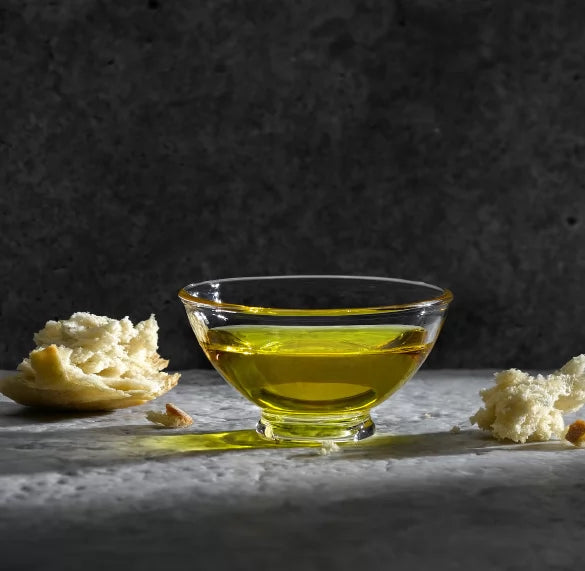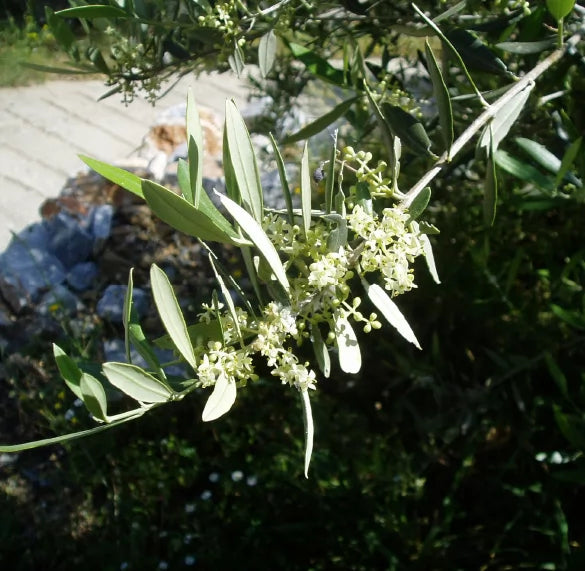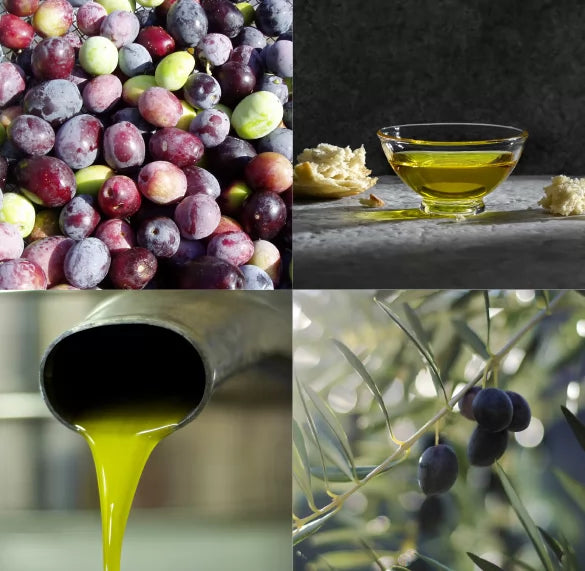About Olive Oil
FROM BRANCH TO BOTTLE

Olives have been cultivated for around 7,000 years and olive oil has a long history documenting its beneficial properties.
Scientific studies have proved that olive oil is beneficial for health in all sorts of ways if it is top grade and fresh.
However research has also discovered that 99% of the nutrients in good olive oil are missing from many commercially produced oils. And olive oil has historically been one of the most adulterated agricultural products in the EU.

Never buy a bottle of olive oil that doesn’t show the month and the year of harvest: ‘best before end’ only indicates a period of time after bottling the oil. It could be years old already.
Olive oil also has a long history documenting seriously nefarious practices in its production, processing and promotion to the public.
Read all about it in Tom Mueller’s book – Extra Virginity. Alternatively take a look at the following articles for more information:
Slippery Business – The Trade in Adulterated Olive Oil
Most Extra Virgin Olive Oil is not Virgin at All
What's in a Name?
Extra Virgin, virgin, pure, and just olive oil – what is the difference.
It’s all a question of quality and freshness.

‘Extra Virgin’ is the best: picked from the tree and milled with 24 hours or sooner… the olives have to be top quality, as free from blemish as possible. Extra Virgin is measured by acidity: less than 0.8% oleic acid per 100ml of oil – and also by taste and smell by a small panel of trained sommeliers who assess the qualities of the oil.
‘Virgin’ olive oil also comes from olives milled fresh from the tree, but the quality is compromised. There may have been diseased olives in the mix, or the fruit has been contaminated by insects, bruised during harvesting, the milling delayed so oxidation has started. The acidity is measure up to 2.0 % per 100ml of oil.
‘Pure’ is the strange name given to oils which were condemned by the mill as unfit for human consumption, extracted from windfall fruit which is bruised, rotten, badly attacked by the olive ‘fly’. Nevertheless, after they are cleaned up by pasteurisation they come back into the food chain as ‘pure’.
They will have lost any character or nutritional value but are a useful base for cheap artificially flavoured oils.
Olive Oil – without any descriptive adjective – is extracted from the detritus of
the olive milling process – the crushed pips, skins, stalks etc. – which is spun out from the final centrifuges and still has a residue of about 10% oil. This detritus is first dried off, then mixed with a chemical ‘Hexane’ or some such – to strip out the oil; the fluid is then heated to evaporate off the chemical…and the resulting black sludge is then put through several processes to deodorise and clean it up. This is the cheap oil widely used in the food industry known as pomace oil, or pirini oil. Any list of ingredients which includes just plain ‘olive oil’ is using this low grade of olive oil. To be found regularly in food items promoting health…
